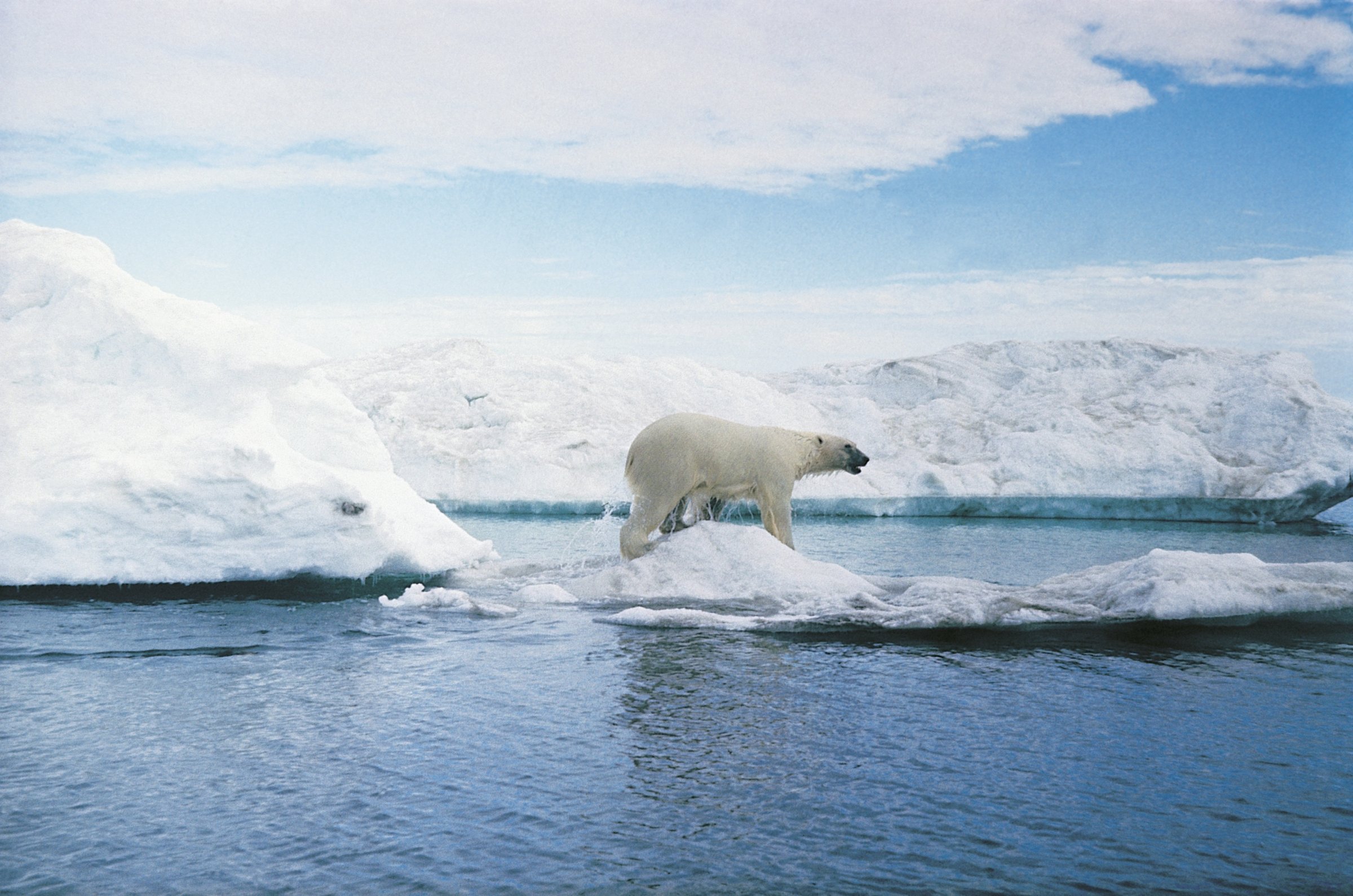
The Arctic ice sheet has shrunk so much that National Geographic is having to make what it calls “drastic” changes to its atlas.
Geographers say the disappearing ice is “one of the most striking” changes in the history of the National Geographic Atlas of the World, which will release its 10th edition in September.
The phenomenon was described by National Geographic geographer Juan José Valdés as “the biggest visible change other than the breakup of the USSR.”
Valdés and cartographer Rosemary Wardley used data from NASA’s 30-year study of layered ice to show the drastic changes caused by global warming and emphasize the vulnerability of Arctic ice to climate change.
National Geographic explains that as the ice thins through melting, sunlight is able to penetrate remaining ice more easily and warm up the ocean underneath, which in turn makes the ice melt even faster. Small ponds of melted water — which absorb sunlight — also collect on the surface of the ice and further contribute to the reduction.
Valdés thinks that the atlas could help people see the effects of global warming in a tangible way. “Until you have a hard-copy map in your hand, the message doesn’t really hit home,” he said.
[NatGeo]
More Must-Reads from TIME
- Donald Trump Is TIME's 2024 Person of the Year
- Why We Chose Trump as Person of the Year
- Is Intermittent Fasting Good or Bad for You?
- The 100 Must-Read Books of 2024
- The 20 Best Christmas TV Episodes
- Column: If Optimism Feels Ridiculous Now, Try Hope
- The Future of Climate Action Is Trade Policy
- Merle Bombardieri Is Helping People Make the Baby Decision
Contact us at letters@time.com